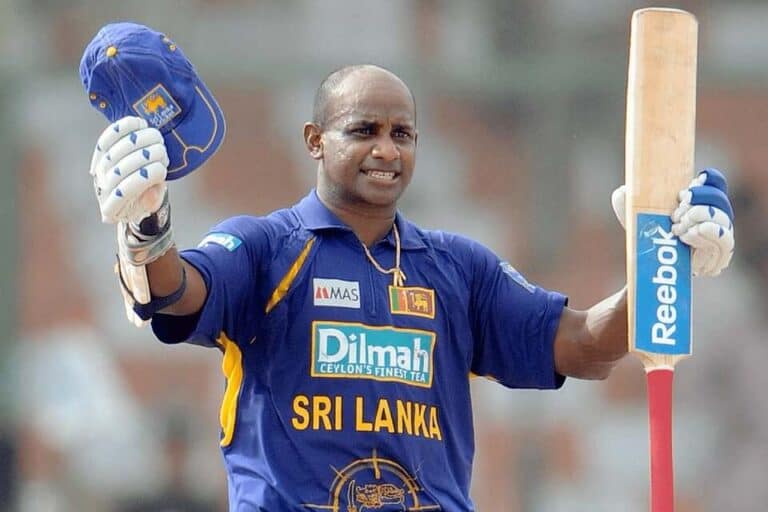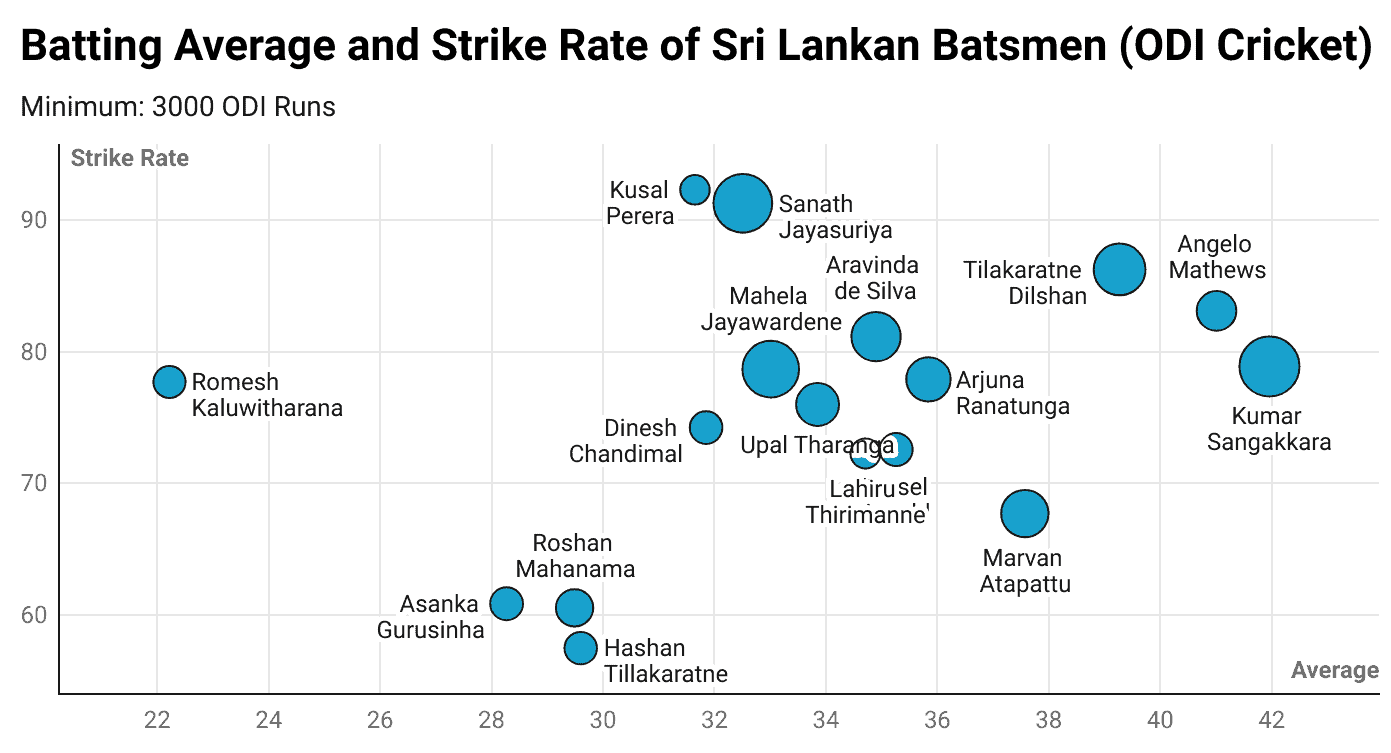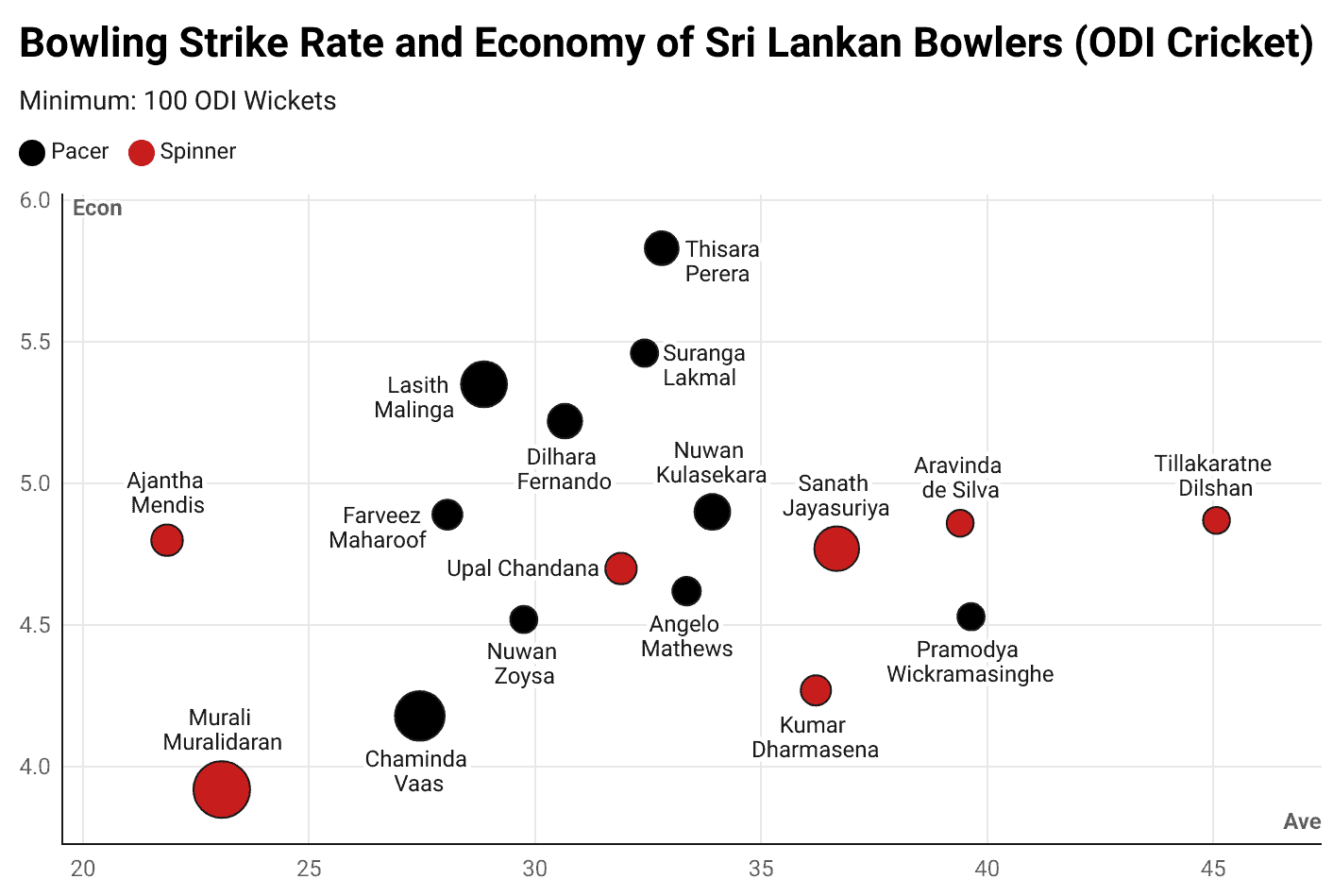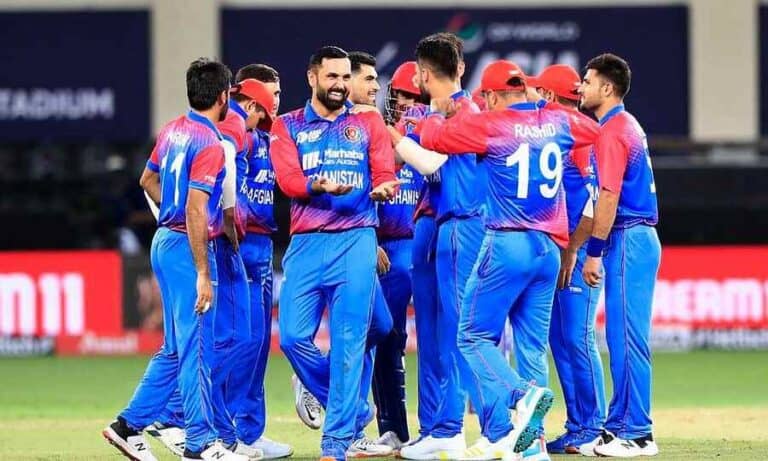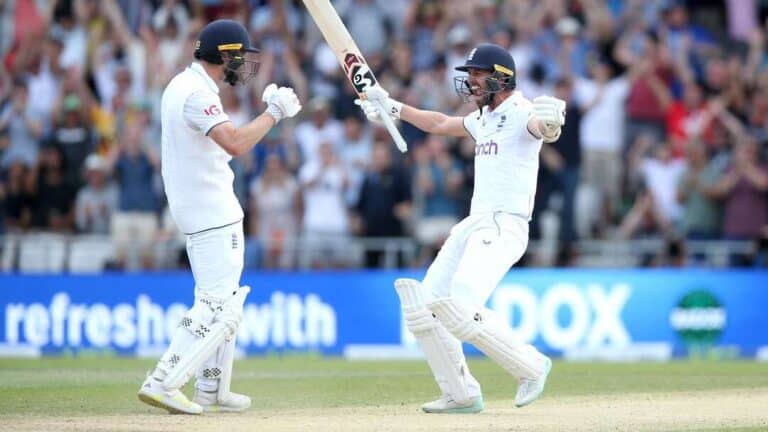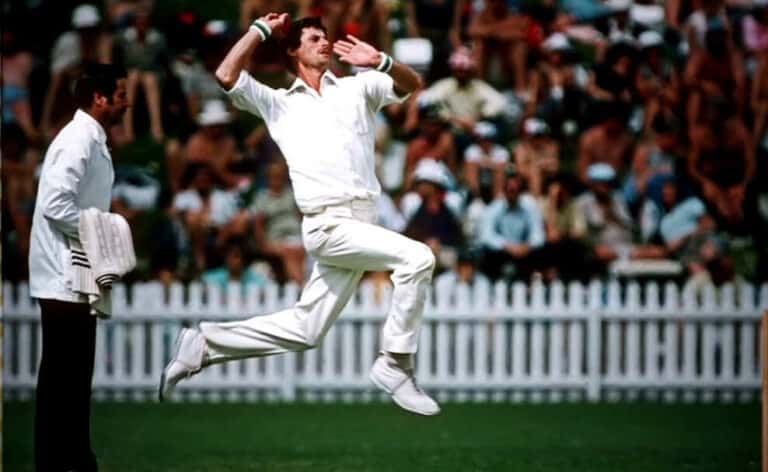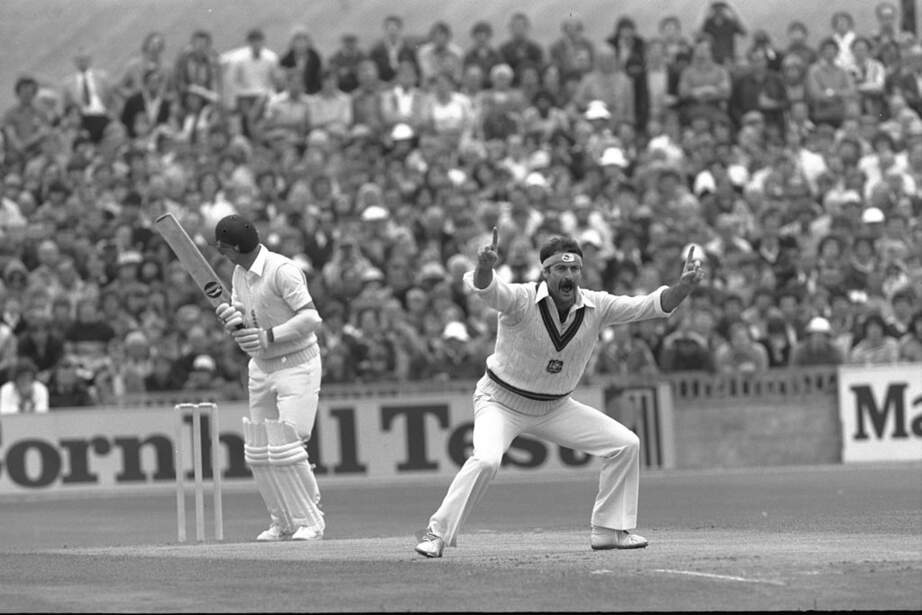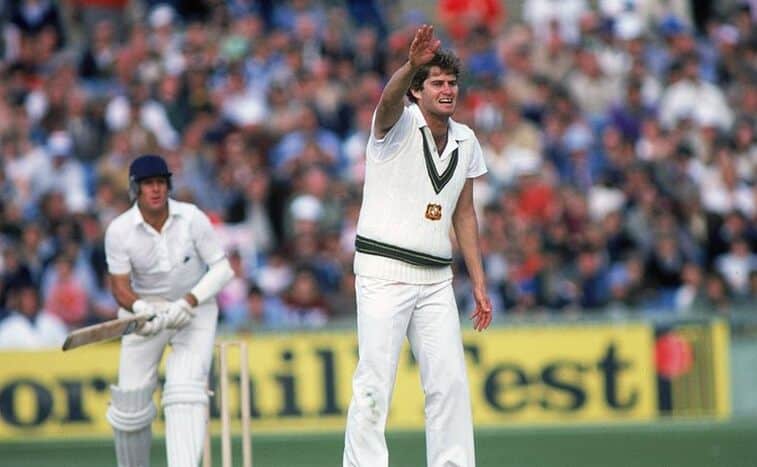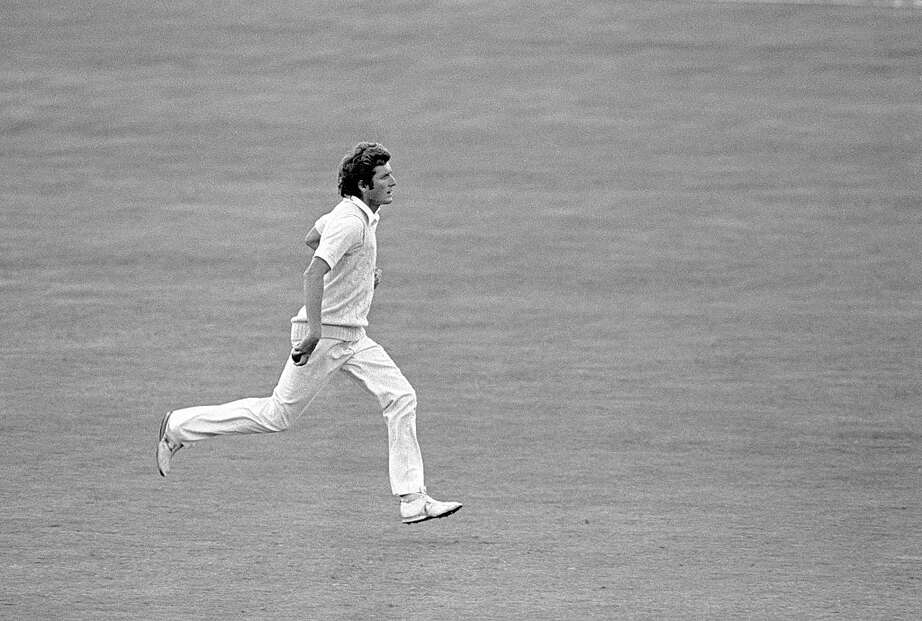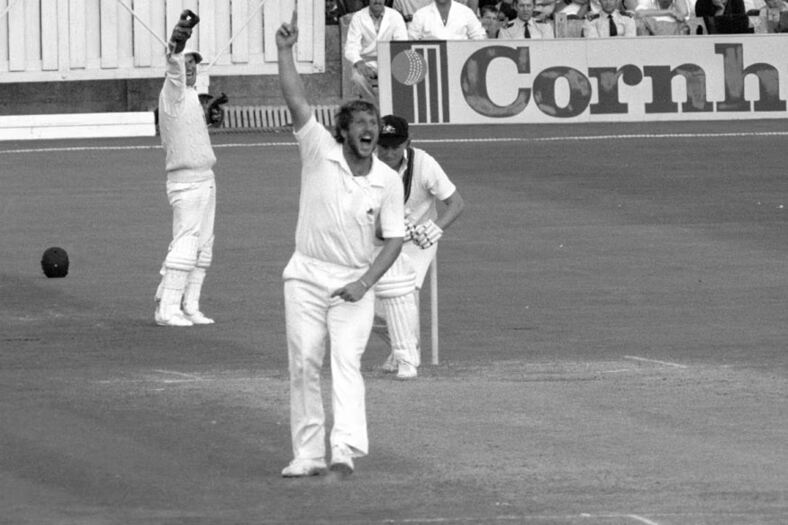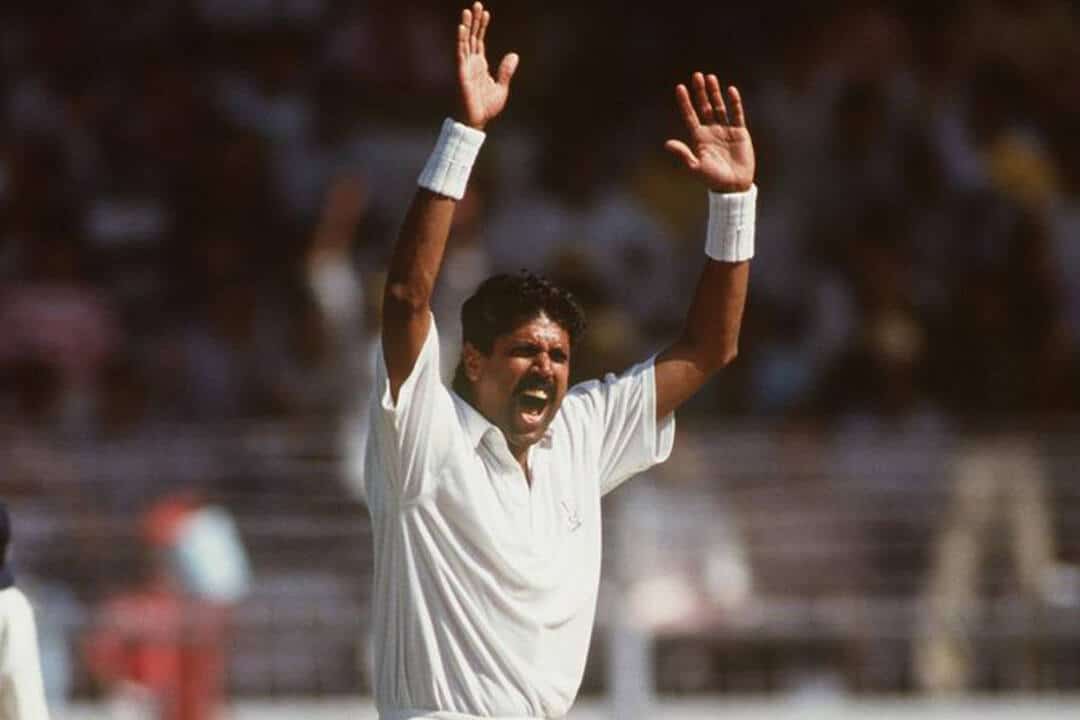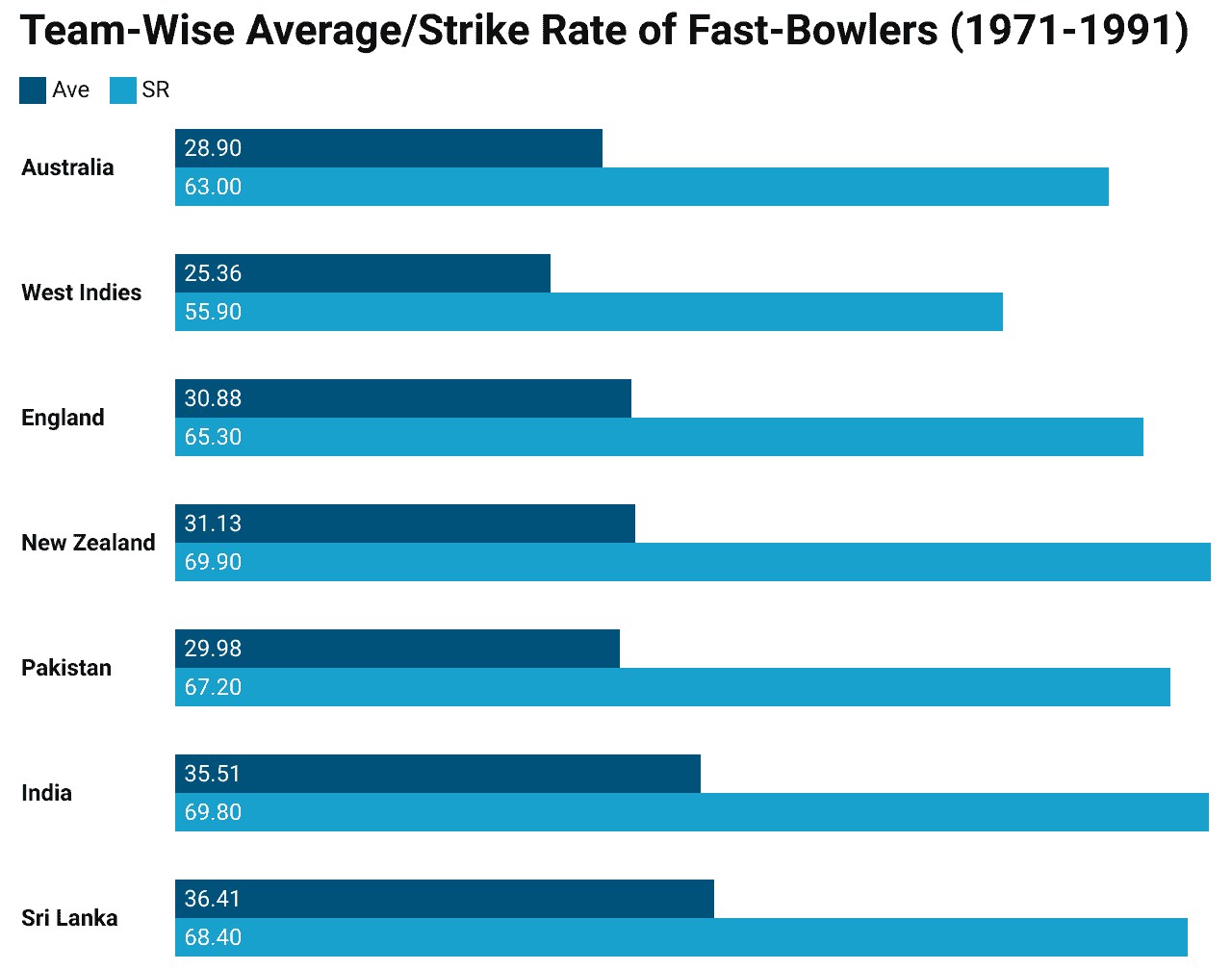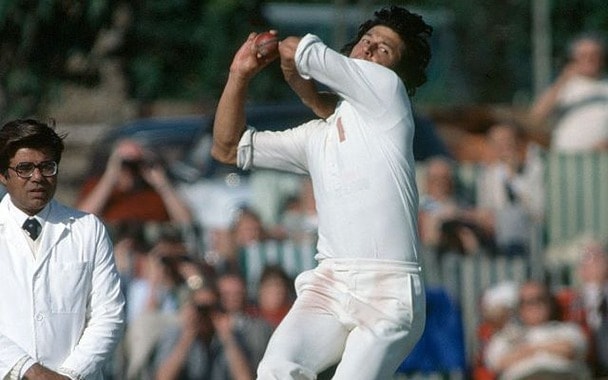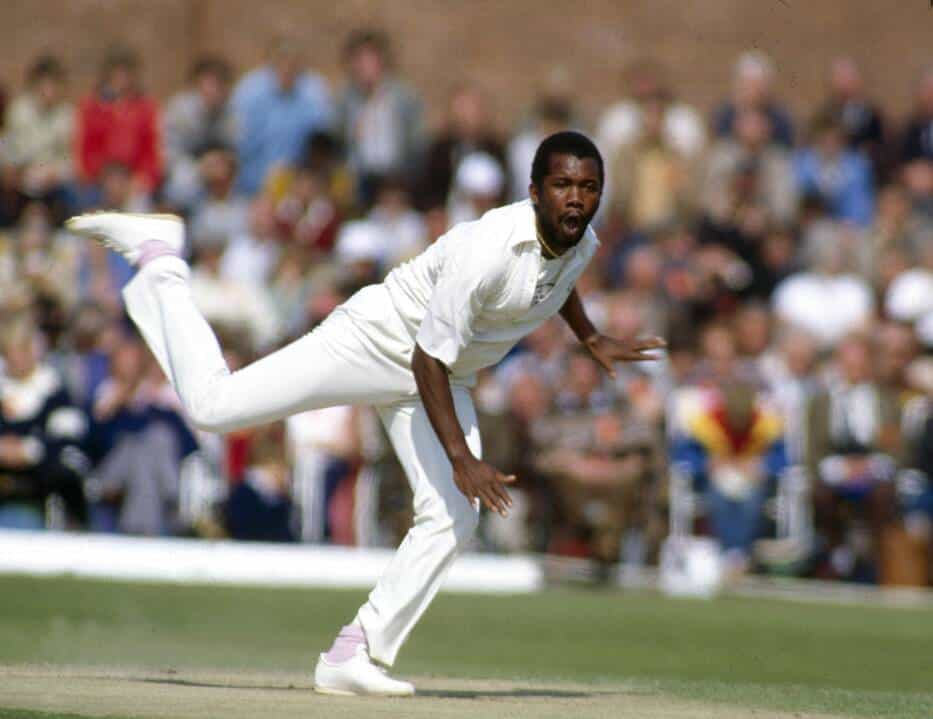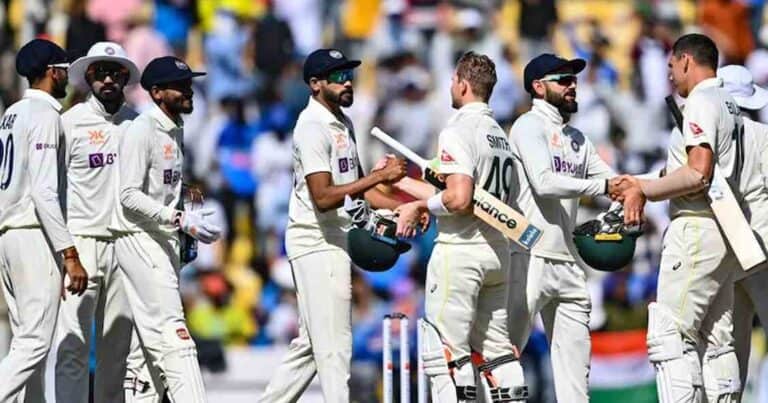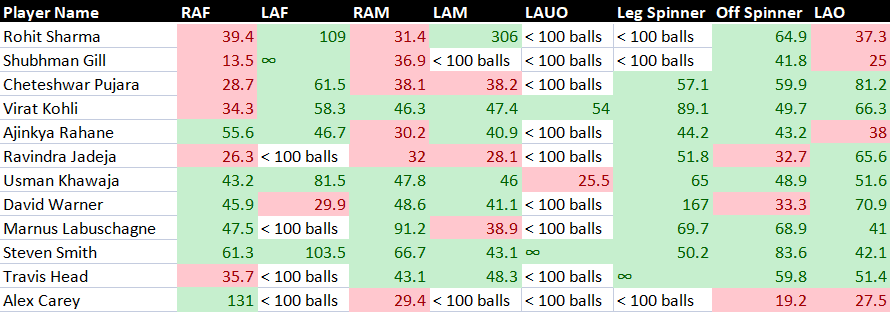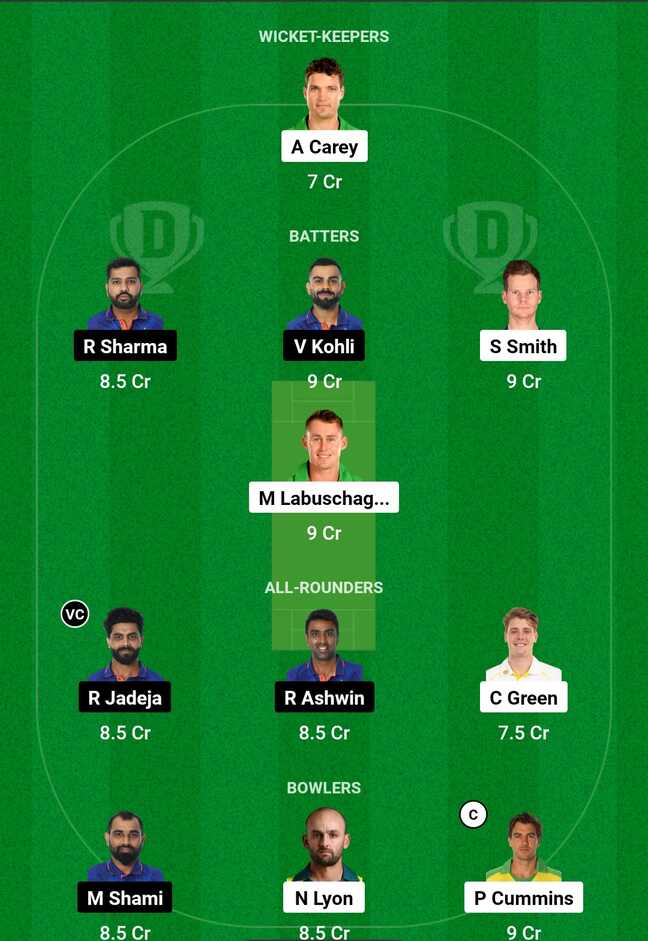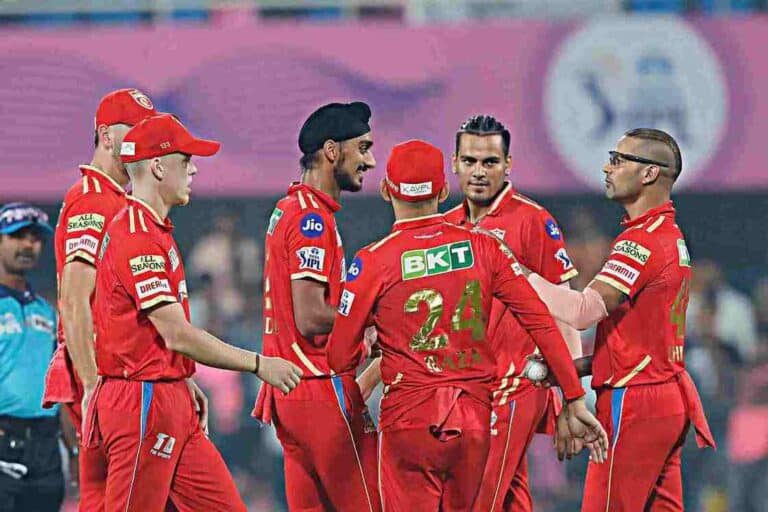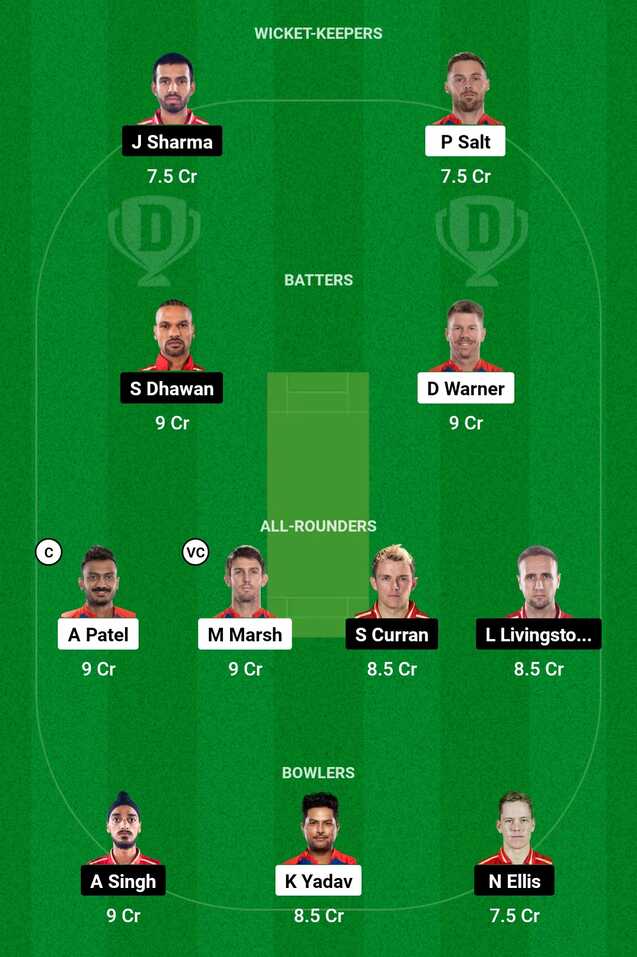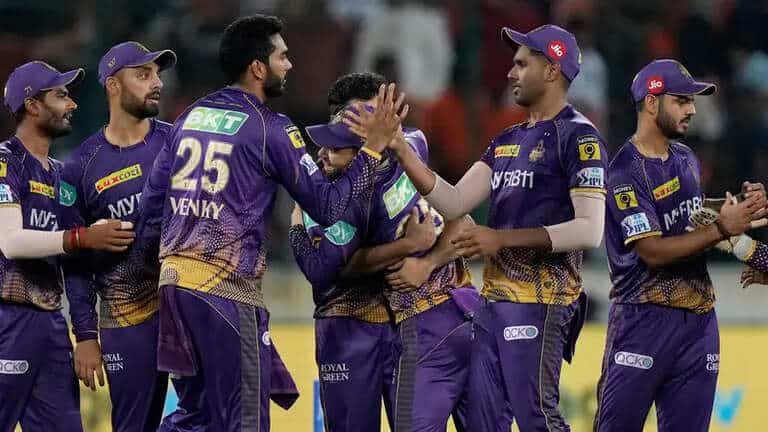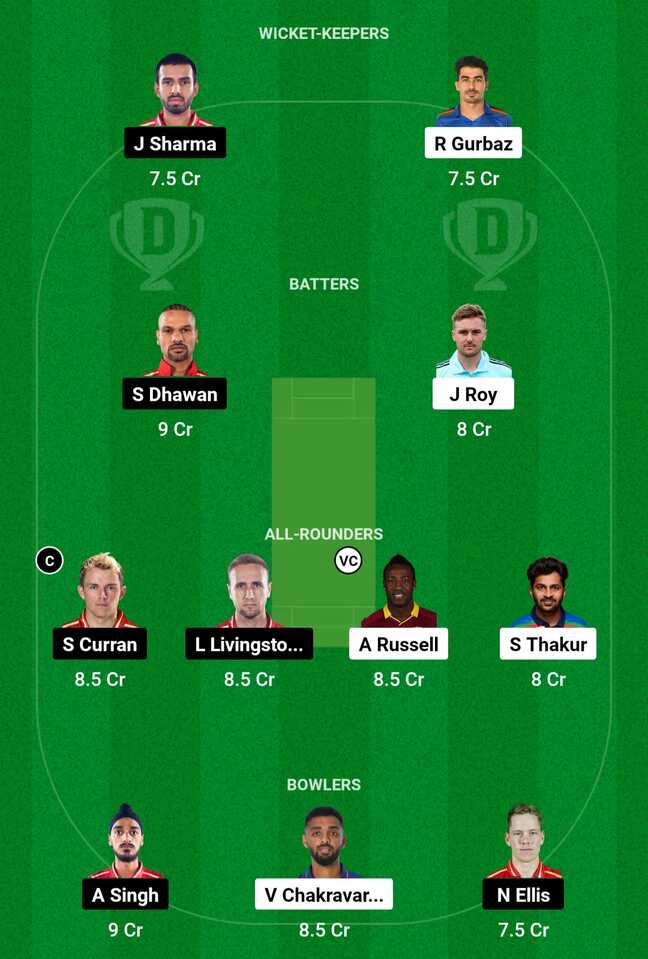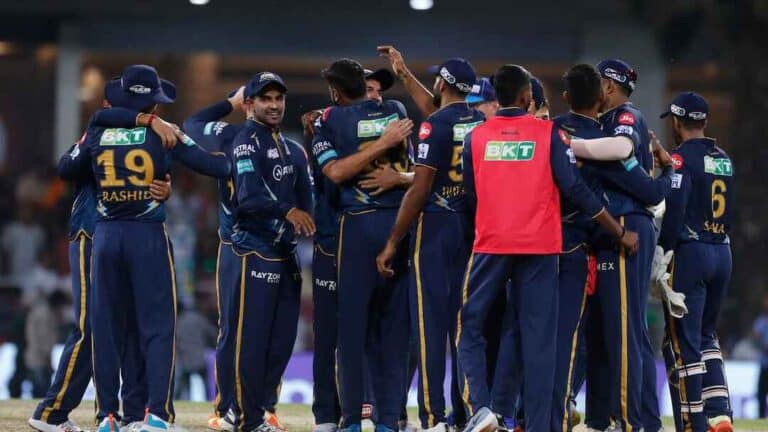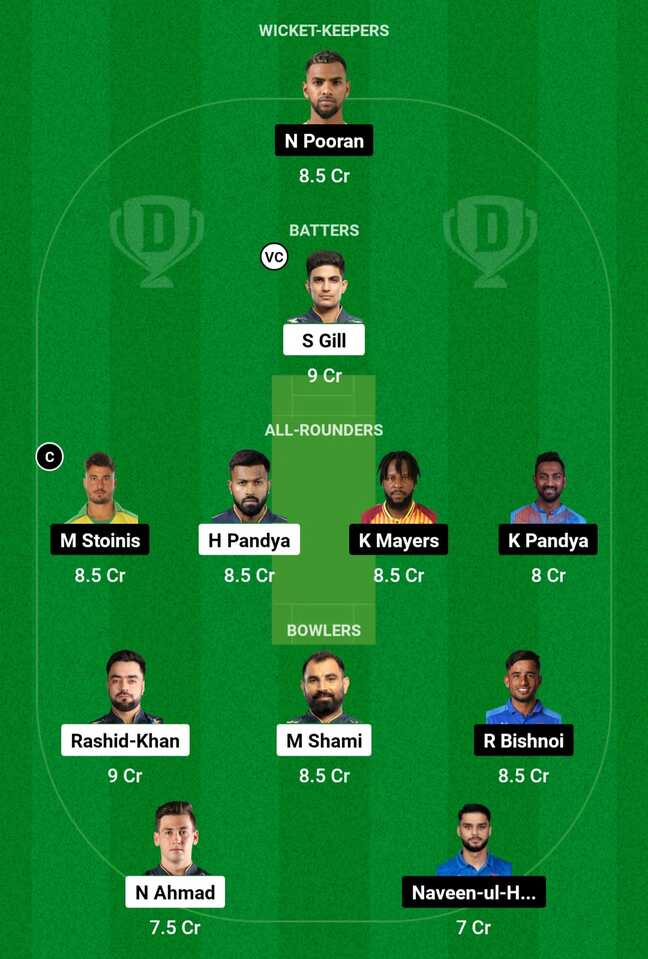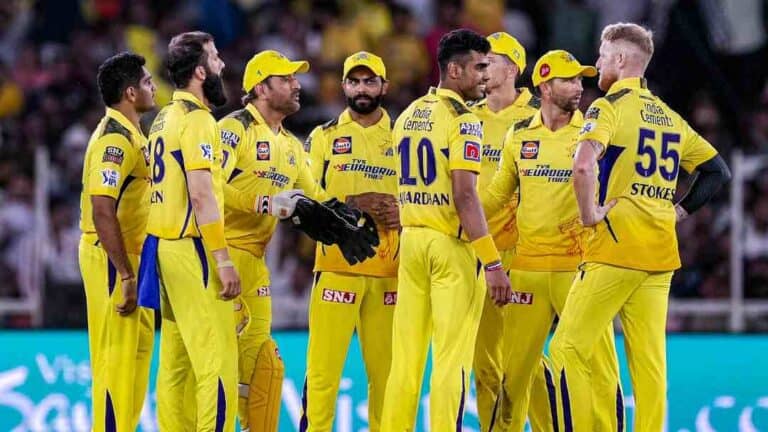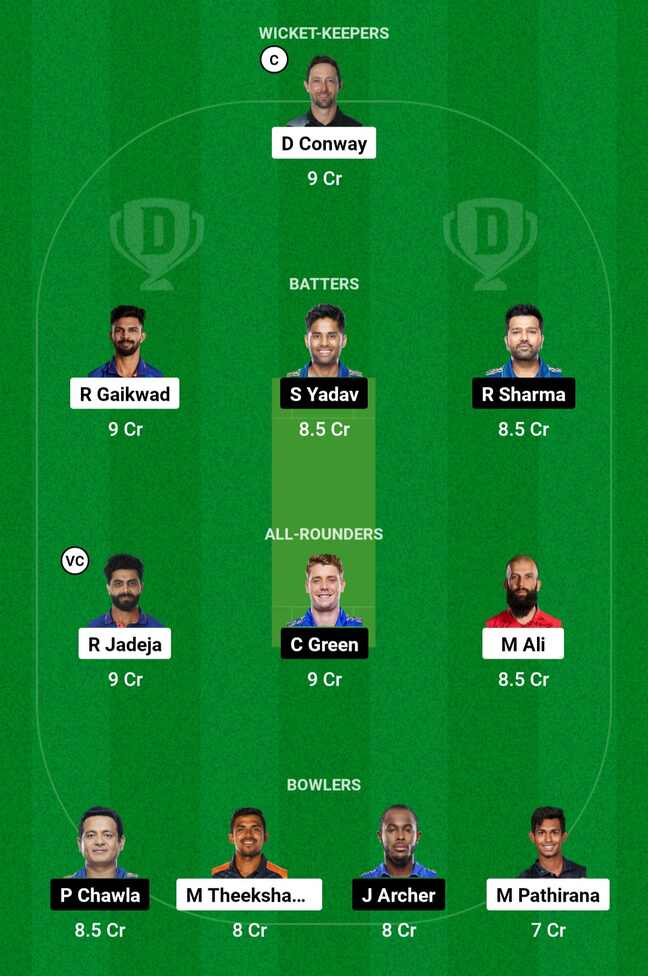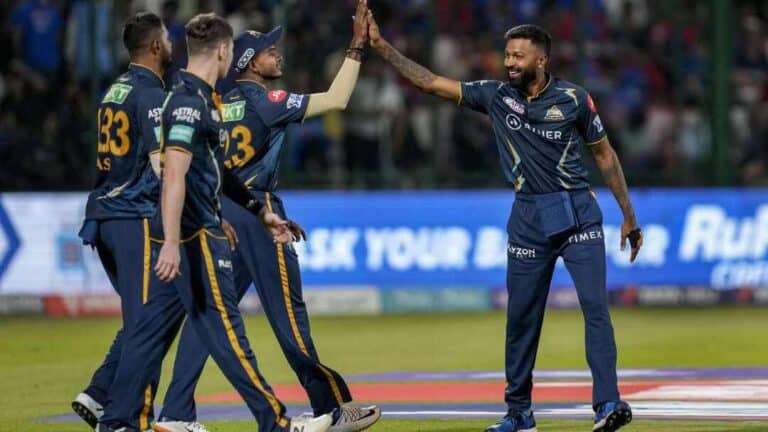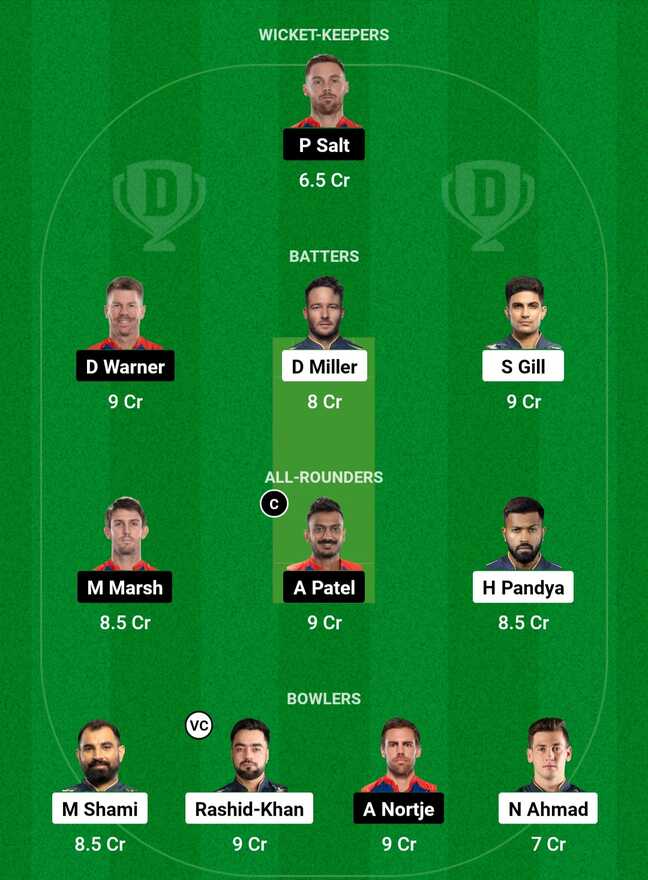Steaming in with red leather holding the burden of their side, fast bowlers are the epitome of strength. Some of them swing the ball, some bounce inconceivably, with others dependent on accuracy and there is also a little portion of pacers who excel in all of these.
Continuing our series, we are here with part 2 discussing Fast bowlers in Test cricket in the period South Africa was banned from international cricket due to apartheid (1971-1991).
In this article, we will talk about all the fast bowlers who took at least 75 test wickets for Australia, England, New Zealand, and the West Indies while the threshold of 50 test wickets is decided for Asian pacers.
This era can be called the Peak of Fast Bowling as it features 4 fast bowlers (Richard Hadlee, Malcolm Marshall, Dennis Lillee, Imran Khan) with all of them being in the contention of the debate around the greatest fast bowlers of all time.
Fab 4 All-Rounders in the form of Ian Botham, Imran Khan, Kapil Dev, and Richard Hadlee were also an integral part of test cricket in these years.
Kerry Packer’s World Series Cricket (WSC) and Rebel Tours to South Africa went hand-in-hand with international fixtures. This impacted test cricket to a large extent with many of the cricketers being banned and therefore suffering early retirement. We would restrict ourselves to mention much related to these in our article (until there is a need).
Similar to Part 1, we will talk about the nations in alphabetical order and rank them as bowling units at the end of our article.
Australia: Combination of Pace, Swing, and Brutality
Australia’s fast bowling legacy was resumed even in this period with no compromises. The new ball bowling pair of Lindwall-Miller was replaced by Lillee-Thomson. Maybe not as good as Davidson, but Kangaroos have found a lethal left-arm Bowler in the form of Bruce Reid. Max Walker played the role of Bill Johnston to an extent (or even better than him).
Swing King Terry Alderman added another dimension to Australia’s bowling due to his unmatched record on green tops. Craig McDermott and Merv Hughes played in the next decade too, but we considered them to be mentioned in this part only.
Dennis Lillee
A long bowling run-up followed by one of the most beautiful and rhythmic bowling actions ever by a Fast Bowler. Talking about his speed, he was clocked at 154.8 km/h by the University of Western Australia in 1975.
Lillee’s aim in his initial career was to terrorize the batsman with his sheer pace. Later, he added various variations to his already decorated armoury as he matured as an international bowler. He did this by cutting down his pace and run-up and moving the ball off the seam and using slower balls as one of his weapons.
Dennis made his Test Debut in the 6th test of 1970/71 Ashes and recorded figures of 5/84 in 1st innings. His first test series where he registered himself as a great bowler was the 1972 Ashes when he clinched 31 wickets averaging 17.67.
After being out of the cricket field for 2 years, Lillee returned to cricket for the 1974/75 Ashes and this was the start of the Lillee-Thomson pair. Thomson took 33 wickets averaging 17.93 and Lillee took 25 at 23.95. This duo played an important role to turn the series 4-1 in Australia’s favour.
During the 1975 series, the Sydney Newspaper The Sunday Telegraph mentioned:
“Ashes to Ashes, dust to dust, if Thomson doesn’t get ya, Lillee must.”
His 39 and Alderman’s 41 wickets in the 1981 Ashes can be mentioned as one of the best bowling efforts in a lost test series. However, he achieved no. 1 in the ICC Test bowler rankings in the same year 1981.
Due to his poor form and after being dropped for a match in the 1983/84 home series against Pakistan, he announced his retirement during the series. Lillee took a wicket on the final ball of his test career with a total of 8 wickets in his final test. He retired with the most test wickets (355), which was a world record at that time.
Talking about Lillee and not mentioning Rod Marsh is no less than a sin. “caught Marsh, bowled Lillee” was a regular mention on the scorecard throughout the career. This appeared a total of 95 times, which is still the most for a bowler-WK pair.
- Matches-70
- Innings-132
- Wickets-355
- Bowling Average-23.92
- Bowling Strike Rate-52.0
- 5w haul(s)-23
Jeffrey Thomson
Partnered with Lillee, Thompson-Lillee could be termed as the fastest and one of the best bowling pairs ever in cricket. Thomson was even faster than his partner and was timed at 160.6 km/h at WACA in 1975, which is still the fourth-fastest delivery of all time.
Jeff Bowled with a short run-up and a very unique slinging action. He didn’t swing or seam the ball much with his fingers. His primary ability was to make the ball bounce from a specific length and Australia’s hard/bouncy pitches helped him a lot with his style.
Thommo is rated as the fastest of all time by many of the teammates and opponents he played with. Ian Chappel and Wicket-Keeper Marsh believed that Thompson bowled above 180 km/h. Viv remarked Jeff was the fastest he ever faced.
1975 Ashes was the highlight of his career and during the same series, Thomson made a controversial statement in a television interview which reads:
“I enjoy hitting a batsman more than getting him out. I like to see blood on the pitch”.
After some mediocre series in 1975-77, Jeff took 22 wickets averaging 23.46 in a closely fought series against India. Australia won the series 3-2 and all three tests were won by close margins.
Thomson played his last test in the fifth test of the 1985 tour to England. He got only 1 wicket in the match and finished his test career with 200 wickets.
- Matches-51
- Innings-90
- Wickets-200
- Bowling Average-28.00
- Bowling Strike Rate-52.6
- 5w haul(s)-8
Max Walker
Max was a right-arm quick Bowler whose bowling action was defined by the nickname ‘Tangles’. He bowled with a short run-up, didn’t use much of his non-bowling arm, and released the ball on the wrong foot. Walker learned the art of out-swinger too later in his career.
Walker played most of his career as a first change and support bowler to the Lillee-Thomson duo. Comparatively, he was slower than both of them but was fast enough and performed whenever the team needed him.
Max debuted against Pakistan in 1972. He picked 5 wickets in his first match and was phenomenal in his second (the last match of the series) when he recorded figures of 15/6 in the last innings and Pakistan fell short of 52 runs in the chase of 159.
He performed brilliantly on the 1972/73 tour of the West Indies in the absence of both of Australia’s main pacers and gathered 26 wickets averaging less than 21 in the series. Australia won the series with a margin of 2-0.
Walker bowled with a new ball in the last test of the 1974/75 Ashes and picked 8 wickets in the only innings England batted. Throughout the series, he picked up a total of 23 wickets.
- Matches-34
- Innings-63
- Wickets-138
- Bowling Average-27.47
- Bowling Strike Rate-73.1
- 5w haul(s)-6
Geoff Dymock
Geoff was a left-arm fast-medium bowler who played for Australia in the mid and late 70s. He made his international debut against New Zealand in 1974 at Adelaide and took a fifer in the second innings.
In October 1979 against India, Dymock recorded a rare achievement by dismissing all 11 batsmen across both innings. He was the third bowler to do so and a total of only 6 bowlers have achieved this remarkable feat.
- Matches-21
- Innings-35
- Wickets-78
- Bowling Average-27.12
- Bowling Strike Rate-71.0
- 5w haul(s)-5
Rodney Hogg
Hogg was a right-arm fast bowler who represented Australia in 38 test matches between 1978-85. Any bowler couldn’t ask for a better debut than Hogg, as he gathered 41 wickets (12.85 apiece) in his debut 1978/79 Ashes series.
His wicket tally of 41 was the best for an Australian in an Ashes, later on, bettered by Terry Alderman in the 1981 Ashes (42 wickets). It is also the fifth-best individual bowling performance in a test series to date.
In the second test of the 1979 India tour, Rodney failed to take a wicket for the first time in an inning and was no-balled 21 times. His performance was very poor across the series except for the third test where he took 4 wickets in the first innings.
Hogg signed for rebel tours of 1985-86 and 1986-87 and was banned for three years. He didn’t play a test after, and thus his international career was over.
- Matches-38
- Innings-66
- Wickets-123
- Bowling Average-28.47
- Bowling Strike Rate-62.
- 5w haul(s)-6
Geoff Lawson
Lawson was a right-arm, tall, fast, out-swinging bowler who went on to take 180 test wickets in 46 tests he played for Australia.
He was in the squad for the India and Pakistan tour of 1979 and 1980 but didn’t get to play a match. Finally, he received his Baggy Green against New Zealand in 1980-81 and picked three wickets in that match.
Geoff took 7 wickets for 81 runs against England in Lord’s 1981 and received the Man of the Match award in his third match.
He received the Player of the Series award in the 1982-83 Ashes which Australia won 2-1 and regained Ashes. Lawson picked 34 wickets in the series averaging 20.20.
- Matches-46
- Innings-78
- Wickets-180
- Bowling Average-30.56
- Bowling Strike Rate-61.7
- 5w haul(s)-11
Terry Alderman
A right-arm medium-fast bowler who could swing the ball like a banana. He is one of the best swing bowlers to ever play test cricket. Alderman could bowl long spells and any sort of help from the pitch made him unplayable.
Just like Rodney Hogg, Terry announced his arrival to international cricket in style. In his first-ever series (1981 Ashes in England), he picked 42 wickets with 9 in his first test. Alderman holds the record for most wickets in a test series without a ten-wicket haul. His tally of 42 wickets in a series is also the fourth-highest ever.
Alderman missed the 1985 Ashes in England because of the ban imposed on him due to his participation in Rebel tours. In the 1989 Ashes, he performed exceptionally well again and clinched 41 wickets.
Terry played his last test on the West Indies tour of 1991 taking just one wicket in the only match he got to play.
Alderman is the only bowler to take 40 wickets twice in a test series. He got a total of 83 wickets in England at 19.33 apiece. In 17 Ashes matches, he captured 100 wickets at 21.17 which proves him an Ashes great.
Terry can’t bat at all which is depicted by his test average of 6.54. But he was a great slip fielder, a quality that lacks in many fast bowlers.
- Matches-41
- Innings-73
- Wickets-170
- Bowling Average-27.15
- Bowling Strike Rate-59.8
- 5w haul(s)-14
Craig McDermott
McDermott was a 6’3″ tall bowler with a beautiful sideways on action who could bowl with a sharp pace and genuine out-swing. He was the lead pacer of Australia from the late 1980s to the early 1990s.
Craig debuted in 1984 against the West Indies. His best inning figures are 8/97 which he recorded in the fifth test of the 1990/91 Ashes.
He was the player of the series in the 1994/95 Ashes where he took 32 wickets. McDermott’s 8 of 14 test fifers were against England.
His 291 wickets in 71 tests are second best for an Australian bowler in our mentioned period. Craig took these wickets at 28.63 apiece.
- Matches-71
- Innings-124
- Wickets-291
- Bowling Average-28.63
- Bowling Strike Rate-56.9
- 5w haul(s)-14
Merv Hughes
Merv was a 6’4″ tall, right-arm fast bowler and a fan favourite due to his colourful persona topped with a Walrus Moustache.
Hughes is mostly known for his “Three overs, two innings Hat-trick”. At WACA in 1988-89 against the West Indies, he took an unusual hat trick spread over three overs across two innings. On the last ball of his 36th over, Hughes got the wicket of Curtly Ambrose, removed Patrick Patterson on the first ball of his 37th over, and got rid of Gordon Greenidge on his first ball of the second innings. Merv took 13/127 in this match, and this was his career-best figure.
- Matches-53
- Innings-97
- Wickets-212
- Bowling Average-28.38
- Bowling Strike Rate-57.9
- 5w haul(s)-7
Bruce Reid
Reid was a tall, left-arm fast-medium bowler with a tricky angle of delivery which was helpful to generate his natural swing. He could generate extra bounce due to his tall height and be accurate with his line and length.
He made his international debut against India in 1986 but was majorly known for the 1990-91 Ashes in which he received a Player of the Series award. In just 4 matches, Bruce captured 27 wickets at a mere average of 16.
Reid was considered the best left-arm swing bowler after Alan Davidson because of the sheer accuracy and performance he gave in his prime. But a series of injuries, starting from the Australia tour of Pakistan in 1988 limited his career to just 27 test matches.
With 6 ft 8 inch, Bruce was the tallest international cricketer along with Joel Garner till the time Mohammad Irfan (7 ft 1 inch) of Pakistan made his debut.
- Matches-27
- Innings-42
- Wickets-113
- Bowling Average-24.63
- Bowling Strike Rate-55.2
- 5w haul(s)-5
England: Successors of Alec Bedser and Fred Trueman
For England, it started with John Snow who had already played a part of his career in the previous decade. Then came the duo of Willis-Botham who were the 2nd and 3rd pacers respectively to capture 300 test wickets for England.
4 England pacers debuted in the 1980s, 2 of them took 75+ wickets and are cited in our article. The other two were Richard Ellison (35) and Gladstone Small (55). So, none of the English pacers who debuted in the 80s (mentioned in this part) clinched 100 wickets. Now let’s see about all those 75+ wicket-takers in detail.
John Snow
John Snow was the connecting dot between two of the greatest fast bowlers of England, i.e. Fred Trueman and Bob Willis. Snow Played with both of them in his extremes. He was a new ball bowler who coupled with multiple pacers throughout his career- be it David Brown or Bob Willis.
Snow used to vary his deliveries a lot, and can produce an over with each ball different from others. He can even surprise you with fast deliveries at times and used to hit the batsman’s body by pitching the ball slightly short.
John debuted in Lord’s test of the 1965 series against New Zealand which was also the last test of Fred Trueman. He was impressive in England’s victory against West Indies in 1967-68 and took 27 wickets averaging less than 19 in 4 test matches.
In the 1970-71 Ashes in Australia, John captured 31 wickets at 22.83 and helped his side regain the Ashes. After John Snow, no England pacer has ever taken even 25 wickets in a test series in Australia.
- Matches-49
- Innings-93
- Wickets-202
- Bowling Average-26.66
- Bowling Strike Rate-59.5
- 5w haul(s)-8
Geoff Arnold
A right-arm fast-medium Bowler who mastered bowling late out-swing and could move the ball in both directions off the seam. He was most effective on the green tops of England.
Arnold’s excessive love was saved for India. He was instrumental in bowling out India for 42 in 1974 at Lord’s along with Chris Old. Also in India, he captured 17 wickets at 17.64 in 1972-73.
Geoff’s test career was only limited to 34 tests because of injuries and good competition in England’s test side. He was also nicknamed Horse.
- Matches-34
- Innings-61
- Wickets-115
- Bowling Average-28.29
- Bowling Strike Rate-66.5
- 5w haul(s)-6
Bob Willis
Bob bowled with a very unusual run-up; hiding the ball in his right hand before the back till the time of the release of the ball. He pitched the ball with a sheer pace which would generate a steep bounce and could be threatening for the batsman.
Willis played his first test in the 1971 Ashes and finished his first test series with 12 wickets averaging 27.41.
In the 1976/77 tour of India, Willis took 20 wickets at 16.75 on the grounds not suited much for fast bowling. In the 1976 Ashes, he took 27 wickets.
His greatest test performance should be 8/43 against Australia in the 1981 Ashes. This performance might also be a part of the best individual bowling performances in a test inning.
Bob was England’s captain in the 1983 series against New Zealand where he took 20 wickets at a mere average of 13.65. In the first match of the series, Willis took the wicket of Lance Cairns and became England’s leading wicket-taker in test cricket surpassing Fred Trueman.
He announced his retirement after being hammered by Michael Holding in a test match in 1984.
Bob finished his career with 325 wickets, only next to Dennis Lillee at that time. He is still the fourth-highest England wicket-taker in test cricket after James Anderson, Stuart Broad, and Ian Botham. He also holds the record for most test wickets without a single instance of 10 wickets in a match.
- Matches-90
- Innings-165
- Wickets-325
- Bowling Average-25.20
- Bowling Strike Rate-53.4
- 5w haul(s)-16
Chris Old
A 6’3” tall right-arm fast-medium bowler primarily known for bowling late out-swing. Just like Max Walker of Australia, he played as a support bowler for the Willis-Botham duo.
His test debut came against India on their home soil in 1972. Chris took a total of 6 wickets in the match with Sunil Gavaskar being his first international dismissal.
He was the main reason alongside Arnold to dismiss India on 42 in 1974. Old captured fifer for just 21 runs with Arnold taking 4-19. At Edgbaston in 1978, he took 4 wickets out of 5 balls against Pakistan.
Old is the only English player to feature in both ‘Centenary Tests’ that took place in 1977 at Melbourne and in 1980 at Lord’s.
Chris declined the offer to play in World Series Cricket but surprisingly took part in Rebel Tours of 1982, thus ending his international career.
- Matches-46
- Innings-81
- Wickets-143
- Bowling Average-28.11
- Bowling Strike Rate-61.9
- 5w haul(s)-4
Mike Hendrick
Mike was a 6’3″ tall, right-arm fast-medium bowler who bowled with a sideways-on action and seamed the ball away from the right-hander.
The 1978/79 Ashes can be termed as his best series as he took 19 wickets in the series averaging just 15. With 87 wickets, he holds the record for most test wickets by a bowler without ever taking a fifer.
- Matches-30
- Innings-54
- Wickets-87
- Bowling Average-25.83
- Bowling Strike Rate-71.3
- 5w haul(s)-0
Ian Botham
An exciting middle-order batsman, a right-arm fast bowler, a good slip fielder, and a proper rescuer for his team; Botham is one of the best test players ever who needs no introduction.
Talking about his bowling, he started as a fast-medium swing bowler. He developed the art of fast inswinging yorker and mastered the pace variation with leg-cutters, going forward in his career. Even Botham’s bouncers can be proved deadly for the best of batsmen.
Ian played his first match on 28 July 1977 against Australia at Trent Bridge. But Botham’s main achievement in his early years was the 1980 tour to India when he became the second player to score a century and take 10 wickets in the same match.
Botham’s next success was in 1981 Ashes, also called ‘Botham’s Ashes’ due to his heroics throughout the series. He was England’s highest scorer (399 runs) and wicket-taker (34 wickets) in the series and also took 12 catches. He was selected as the player of the series.
In a test against Sri Lanka in 1984, Botham didn’t get much help from the pitch in the first innings so he started bowling off-spin in the second innings and registered figures of 6/90.
In 1986, Bruce Edgar from New Zealand became the 355th victim of Botham and he levelled the record of highest wicket-taker with Dennis Lillee. In the next over, he got the wicket of Jeff Crowe and became the highest wicket-taker in test cricket with 356 wickets.
He held this record for 2 years until it was overtaken by Richard Hadlee in 1988. One more interesting fact about his bowling was that for the first 100 wickets, his average was under 19, 21.20 till 200 wickets but he finished his career with 383 wickets at an average of 28.40.
- Matches-102
- Innings-168
- Wickets-383
- Bowling Average-28.40
- Bowling Strike Rate-56.9
- 5w haul(s)-27
Graham Dilley
Graham was a 6’4” tall fast bowler with a high-arm action and was so fast that Clive Lloyd remarked him as the fastest white bowler in the world.
He debuted in 1979 at the age of 20 and became the youngest England player to debut in international cricket in the past 30 years.
He also played a significant role in the 1981 Ashes with 12 wickets in the first two tests and building an important partnership with Ian Botham in the Headingley test which proved efficient for England to take a lead of 130.
Dilley played his last test against Australia at Edgbaston in 1989. Later, he went on to play in Rebel Tours, thus reducing his chance to play in tests again.
- Matches-41
- Innings-65
- Wickets-138
- Bowling Average-29.76
- Bowling Strike Rate-59.3
- 5w haul(s)-6
Neil Foster
Foster was one of the three debutants who played against New Zealand in 1983. This was the first instance of England playing three debutants in a single match after 1953. Foster took a single wicket in that game.
The Madras test of 1984/85 should be marked as the best test for Foster. He took 11 wickets and helped England in winning the match, and eventually the series. He took 27 wickets in India and Pakistan in that season averaging just 22.96.
His 8/197 against Pakistan at Leeds in 1987 remains the best Innings bowling figure taken in an innings defeat. Out of the 29 tests he played, England won only 3.
- Matches-29
- Innings-47
- Wickets-88
- Bowling Average-32.85
- Bowling Strike Rate-71.1
- 5w haul(s)-5
India: An improved unit of Fast Bowlers
India’s performance as a fast bowling unit significantly improved from previous decades in the 1970s and 1980s. This spin-dominated nation had 2 fast bowlers who took 100+ wickets (Kapil and Ghavri) with Manoj Prabhakar at 96 scalps. Chetan Sharma and Madan Lal were the other two pacers with 50+ wickets.
Madan Lal
Madan Lal was an Indian right-arm pacer and a lower-order batsman. He used to tackle the Indian team in difficult situations due to which he got his nickname of ‘Maddad Lal’.
Lal was a leading pacer for the Indian team for the initial 4 years after his debut in 1974 (till 1978) but played a support role to Kapil Dev in the second phase of his career from 1981.
In his 39 Test matches career, Madan dismissed 71 Batsmen and also scored 1042 runs averaging 22.65.
- Matches-39
- Innings-63
- Wickets-71
- Bowling Average-40.08
- Bowling Strike Rate-84.4
- 5w haul(s)-4
Karsan Ghavri
Ghavri was the other pacer to debut in 1974 along with Madan Lal. Due to a lack of support for fast bowling on Indian pitches, only one of the two could play in the team on most occasions, along with the Indian Spin quartet.
Karsan was a left-arm fast-medium bowler with a long run-run who could bowl left-arm orthodox spin too. When Madan was out of the Indian side from 1978-81, he formed a new ball partnership with Kapil Dev (rare for Indian cricket at that time).
In a test match against England in 1976, stand-in captain Sunil Gavaskar asked Ghavri to bowl and he got 5 wickets of his spin bowling in a spell of just 8 overs.
His most successful series was the West Indies tour of India in 1978-79 where he took 27 wickets.
During the third match of India’s tour to Australia in 1981, he got the wicket of both Australian openers in consecutive deliveries in the second innings. This helped in India’s victory by 59 runs.
- Matches-39
- Innings-69
- Wickets-109
- Bowling Average-33.54
- Bowling Strike Rate-64.5
- 5w haul(s)-4
Kapil Dev
Kapil Dev was a fast-medium bowler, hard-hitting batsman, superb captain, and a revolutionary player as a whole. He is one of the prime reasons responsible for the growth/development of cricket in India.
He had a very elegant side-on bowling action which helped him in bowling his trademark out-swinger. Kapil played as a main Indian bowler for most of his career. In the 1980s, he also learned to bowl inswinging yorkers.
Kapil made his international debut against Pakistan at Faisalabad in 1978. Sadiq Mohammad was his first victim and Kapil alerted Pakistani batsmen with his pace and bouncers.
His first great performance in a series was against Australia at home in 1979. He finished with 28 wickets averaging just 22.32 and India won the 6-match series by 2-0.
In 1979/80 against Pakistan, Dev captured 32 wickets with a bowling average well below 18. Kapil took 7/56 in the second innings at Chepauk and rates this as his best bowling performance. He became the youngest cricketer to score 1000 runs and take 100 wickets in test history. Kapil achieved this feat in 25 tests while Ian Botham is the best who took 21 matches for the same.
Kapil was the man of the series in consecutive series against England in 1981-82. At home, he took 22 wickets scoring 318 runs. In England, he dismissed 10 Batsmen while making 292 runs with the bat in three matches.
His 9/83 against West Indies at Motera in 1983 was the best test inning bowling figure in a loss till February 2022. Ajaz Patel surpassed it by taking 10 wickets in an innings against India.
Kapil dismissed Mark Taylor in a series against Australia in Australia in 1981/82 and became the second bowler to take 400 wickets in test cricket. He took 25 wickets on that tour to Australia.
He was selected as Wisden’s best Indian cricketer of the 20th century. Kapil finished his test career with 434 wickets (the most by any player at the time of his retirement in 1994). He is also the only cricketer to score 5000 test runs with 400 wickets.
- Matches-131
- Innings-227
- Wickets-434
- Bowling Average-29.64
- Bowling Strike Rate-63.9
- 5w haul(s)-23
Chetan Sharma
Chetan debuted at Lahore in 1984 and dismissed Mohsin Khan on his fifth ball in international cricket. He became the third Indian bowler to take a wicket in his very first over in test cricket.
His 10 wickets at Birmingham remain the only 10-wicket haul by an Indian in England. Sharma took 16 wickets in this 1986 series and was one of the main players in India’s 2-0 victory against England on their soil.
- Matches-23
- Innings-39
- Wickets-61
- Bowling Average-35.45
- Bowling Strike Rate-56.8
- 5w haul(s)-4
Manoj Prabhakar
Manoj Prabhakar was a right arm medium pace bowler who usually bowled out-swingers and slower balls. He took 96 wickets in his test career.
Prabhakar has a unique record of playing most matches as both opening batsman and bowler in test and ODI cricket. He did this 20 times in tests and 45 in ODIs.
- Matches-39
- Innings-68
- Wickets-96
- Bowling Average-37.30
- Bowling Strike Rate-77.8
- 5w haul(s)-3
New Zealand: Most improved Test Pacers
The improvement in the performance of fast bowlers can be considered the best for the Kiwis. From just one pacer (Dick Motz) in the 100+ wicket-takers list in the previous era to 5 of them in the same list. Also, New Zealand is the only country in our article whose all mentioned bowlers have at least 100 wickets.
Richard Collinge
He was a tall, left arm fast-medium bowler. Richard bowled with a long run-up and both his arms stretched upwards at the time he delivered the ball. He mostly relied on the late swing by pitching the ball up.
Collinge was instrumental in New Zealand’s first test victory against England in 1977-78 and took 6 wickets in the match. Collinge was the highest wicket-taker for New Zealand at the time of retirement in 1978 with 116 wickets.
- Matches-35
- Innings-62
- Wickets-116
- Bowling Average-29.25
- Bowling Strike Rate-66.2
- 5w haul(s)-3
Bruce Taylor
He made his debut against India in 1974 and became the only cricketer to make a century (105) and clinch a fifer (5-86) on his test debut.
His personal best test series was against West Indies in 1971-72. Taylor took 27 wickets averaging just 17.70 in 4 tests. All 5 tests of the series were drawn and the second-best bowler took 14 wickets.
- Matches-30
- Innings-53
- Wickets-111
- Bowling Average-26.60
- Bowling Strike Rate-57.0
- 5w haul(s)-4
Richard Hadlee
Often stated as the best test bowler of all time, Richard Hadlee was a right-arm fast bowler who played for New Zealand between 1973 and 1990.
He started his career as a bowler who could bowl with extensive raw pace but shortened the length of his run-up going forward. This helped him in improving his accuracy and he can also generate more movement off the wicket and in the air as well.
His out-swinger could trouble even the best of batsmen. Many experts also consider Hadlee as the best-ever new ball bowler. He was picked as the second-best Test bowler by Wisden in December 2002.
His first breakthrough performance was against India in 1976 when he took 11 wickets in a match, thus fixing his spot in the team. In 1978, Richard took 6/26, when England was dismissed for 64 in a chase of 137. This was New Zealand’s first test win against England.
Against England in 1984, New Zealand registered a win in just three days(of which one day was lost due to rain). Hadlee took 8 wickets in the game and helped in bowling out England for less than 100 runs in both innings. He also made quick 99 runs in the only Innings New Zealand batted. He was ranked 1 in the ICC Test bowler rankings after this and was at the top for the next 4 years.
In Brisbane in 1985/85 (first test), Hadlee picked up his career-best of 9/52 in Australia’s first innings (6-71 in the second innings) and New Zealand won the game by an innings. He picked 18 wickets more in the next 2 matches and New Zealand won their first test series in Australia. Hadlee won the Player of the Series award and finished with 33 wickets in 3 tests for just 12.15 apiece.
Against England in 1986, Richard Hadlee was again the architect for New Zealand in the second test at Nottingham with 10 wickets in the match and 68 runs in the first innings. He was picked as the man of the match and the man of the series as well. The other two tests were drawn and New Zealand won 1-0 (their first series win in England).
At his home ground in Christchurch (1989/90), Hadlee got his 400th Test wicket in the form of Sanjay Manjrekar of India. Hadlee retired in 1990 against England. He took a fifer in his last test innings and also a wicket on the last delivery of his test career.
Hadlee finished his test career with 431 wickets (which was the most at the time of his retirement) with 22.29 runs per wicket. His bowling average was the best among fab-4 All-Rounders of that time (Botham, Hadlee, Imran, Kapil).
He also scored 3124 test runs at an average of 27.16 with 15 fifties and 2 centuries. Hadlee’s innings figure of 9/52 is the second-best for any Fast Bowler to date.
- Matches-86
- Innings-150
- Wickets-431
- Bowling Average-22.29
- Bowling Strike Rate-50.8
- 5w haul(s)-36
Lance Cairns
Lance was a right-arm fast-medium swing bowler with a front-on bowling action. He dismissed 130 batsmen in his 12 years long career from early 1974 to late 1985.
New Zealand won their first test in England in 1983 at Headingley and Cairns took 10 wickets in the match with his personal best of 7/74 in the first innings.
His second-best test figures of 7-143 were also against England in Basin Reserve in the home series of 1983/84. This match is also remembered for his 64 runs in a ninth-wicket partnership of 118 stitched with Jeremy Coney(174*). The partnership was able to draw the test from a very difficult situation.
- Matches-43
- Innings-72
- Wickets-130
- Bowling Average-32.92
- Bowling Strike Rate-81.7
- 5w haul(s)-6
Ewen Chatfield
Ewen Chatfield was a right-arm fast-medium bowler and his main weapon was his accuracy. He bowled in pairs and was a good complement bowler for Richard Hadlee. Javed Miandad in his autobiography described Chatfield as a tireless bowling machine.
Chatfield made his debut against England in 1975 and no cricketer would ever like to have a debut like his. He couldn’t do much with the ball and was also dismissed for a duck in the first innings. New Zealand was asked to follow on and Chatfield was hit on the head by a bouncer from Peter Lever. He collapsed on the ground and was revived by England’s physiotherapist Bernard Thomas by mouth-to-mouth resuscitation.
- Matches-43
- Innings-73
- Wickets-123
- Bowling Average-32.17
- Bowling Strike Rate-84.2
- 5w haul(s)-3
Pakistan: Fast Bowlers from the Best Asian Side
The most significant role of Pakistani fast bowlers was the gift of reverse swing to the cricketing world. In this period, only 2 pacers could clinch 100 test wickets for Pakistan. The threshold of 50 wickets was achieved by 6 pacers but we haven’t mentioned Asif Iqbal (53 scalps in 58 matches) and Mudassar Nazar (66 scalps in 76 matches).
Sarfaraz Nawaz
Sarfaraz was a 6’6″ tall right-arm fast-medium bowler who was able to seam the ball in both directions. He is also known for developing reverse swing which was helpful on the flat pitches of Pakistan. Nawaz was good at bowling bouncers too.
He made his debut at Karachi against England in 1969 but was dropped due to his poor performance. Sarfaraz made a comeback after three years and took 8 wickets in the 1972-73 Sydney match against Australia. Most of his performance went in vain; either due to the team’s poor performance or the match being drawn, and rain played a spoilsport in some of the matches too.
Sarfaraz took 17 wickets against India in 1978-79 and was the highest wicket-taker in the first series Pakistan won against their arch-rivals. He took 9 wickets in the Karachi match.
Nawaz’s best performance was against Australia at Melbourne in 1979 when he took 7 wickets for 4 runs in his spell of 33 balls. Australia was looking good at 305/3 in the chase of 402 but Pakistan won the game by 71 runs. His inning figures were 86/9 in 35.4 overs.
He took 6 wickets and scored winning runs in the first match in Karachi in England’s 1983-84 tour of Pakistan. He retired multiple times in his career but the third test of the same series was his last and he took 4 wickets in the first innings. Sarfaraz also made 90 runs in the 9th wicket partnership of 161 runs with Zaheer Abbas. The match was drawn with Sarfaraz being the man of the match in his last test. Pakistan won the series 1-0 and this was their first series win against England.
- Matches-55
- Innings-95
- Wickets-177
- Bowling Average-32.75
- Bowling Strike Rate-78.8
- 5w haul(s)-4
Imran Khan
Imran Khan was a right-arm fast bowler. In his starting phase, he used to bowl with a chest-on and could bowl at a medium pace only. Later on, he rebuilt his action into a more classical style and was able to deliver the ball at a much better pace.
Khan learned the art of reverse swing from Sarfaraz Nawaz, mastered it, and troubled batsmen throughout his career. Later on, he transmitted this art of reverse swing bowling to Wasim Akram and Waqar Younis who also became proficient in this trick in the upcoming years.
One of the best series performances came when India toured Pakistan for a 6-match test series in 1982/83. Imran took 40 wickets in the series averaging just 13.95. He also scored 271 runs in 5 Innings averaging 60+.
He was declared the man of the series against West Indies in 1988 (after his comeback from retirement) for taking 23 wickets in just 3 matches at 18 apiece. Winston Benjamin and Jeffrey Dujon won the last match for West Indies by adding 61* for the ninth wicket and the series was drawn.
Imran’s best years in international cricket were 1980-88. He picked 236 wickets in 8 years with an average of even less than 18 (17.77). Khan also picked 18 fifers and 5 10 wicket hauls in this period.
Imran achieved the triple of 3000 runs and 300 wickets in just 75 tests, just behind Ian Botham’s record of 72 tests. His 922 points attained after a match against India in 1983 ranks him third in ICC all-time test bowler rankings.
In his 88 test matches career, Imran scored 3807 runs averaging 37.69 with 6 100s and 18 fifties. He was also the highest wicket-taker for Pakistan at the time of retirement with 362 scalps.
- Matches-88
- Innings-142
- Wickets-362
- Bowling Average-22.81
- Bowling Strike Rate-53.7
- 5w haul(s)-23
Sikander Bakht
Sikander Bakht was a right-arm fast-medium bowler who appeared for Pakistan in 26 tests between 1976 and 1983. He took 67 wickets at a high bowling average of 36.00.
His best performance came in Pakistan’s 1979/80 tour of India. Bakht was Pakistan’s highest wicket-taker with 24 wickets in 5 matches including 3 5-wicket hauls. His career-best figure of 8 wickets for 69 runs was recorded in the first innings of the first test at Delhi.
- Matches-26
- Innings-45
- Wickets-67
- Bowling Average-36.00
- Bowling Strike Rate-72.6
- 5w haul(s)-3
Azeem Hafeez
Hafeez was a left-arm fast bowler with two fingers of his right hand missing due to a birth defect. He was able to play just 18 test matches due to the presence of a variety of fast bowlers in Pakistan.
Azeem’s ability to bowl long spells was one of the reasons for him to be selected for test cricket. In his debut series (Pakistan tour of India 1983), Hafeez bowled 116 overs in 3 tests and was the highest wicket-taker for Pakistan with 10 wickets.
In the first Test of India’s tour of Pakistan in 1984, Pakistan declared on 428/9. With Gavaskar and Vengsarkar on the crease, India was looking comfortable at 94/1 but then Hafeez bowled a fiery spell and achieved his best figure of 6/46. India was bowled out on 156 and had to follow on.
- Matches-18
- Innings-28
- Wickets-63
- Bowling Average-34.98
- Bowling Strike Rate-69.0
- 5w haul(s)-4
Sri Lanka: First pacers of newly developed Test nation
Sri Lanka was awarded their test status by ICC in 1981 and played its first match against England in February 1982. After a wait of around 3.5 years, they recorded their first test victory against India in September 1985. Surprisingly, Sri Lankan pacers had a better bowling Strike Rate (68.4) than India (68.8) and New Zealand (69.9) in our mentioned period.
Ashantha de Mel
Ashantha was the pioneer of fast bowling for Sri Lanka after its recognition as a test nation. He was a right-arm fast-medium bowler who could swing and can extract extra bounce from the pitch.
In Sri Lanka’s first-ever test match, he took 5 wickets in total with 4 wickets in his debut innings. de Mel also played a major role in his country’s first-ever test win (against India in 1985). He clinched 5 wickets in the match.
- Matches-17
- Innings-27
- Wickets-59
- Bowling Average-36.94
- Bowling Strike Rate-59.6
- 5w haul(s)-3
Ravi Ratnayeke
Ravi was a right-arm pacer who bowled at a decent pace and could swing the ball too. He also played as an opener for the India tour of 1986 and on several other occasions.
At Sialkot in 1985, Ravi registered his career-best bowling figures of 8/83. It was the best test innings bowling figure for a Sri Lankan until Muttiah Muralitharan’s 9/65 against England in 1998.
- Matches-22
- Innings-31
- Wickets-56
- Bowling Average-35.21
- Bowling Strike Rate-68.4
- 5w haul(s)-4
Rumesh Ratnayeke
Rumesh was the leader of Sri Lankan fast bowling for the initial years. He could swing the ball in both directions and that too with a decent pace.
His best performance was in Sri Lanka’s maiden test victory in 1985. He dismissed 9 batsmen and ended the match by taking Kapil Dev’s wicket (the best Indian batsman in that innings). In total, Ratnayeke captured 20 wickets in 3 match series and was phenomenal in the first-ever series victory for Sri Lanka (1-0).
- Matches-23
- Innings-35
- Wickets-73
- Bowling Average-35.10
- Bowling Strike Rate-67.9
- 5w haul(s)-5
West Indies: Four Horsemen of Death+Malcolm Marshall
Which is the best fast bowling unit ever to play international cricket? Without any second opinion, we would say West Indies from the mid-1970s till the end of the 20th century.
Initiated with Andy Roberts, followed by Holding, Croft, Garner, and Marshall with Ambrose, Walsh, and Bishop in the 1990s. The latter 3 are the talks of the next part, but let’s discuss other mentioned pacers with Holder and Patterson.
The competition to be selected in the 11 was so intense that bowlers like Wayne Daniel and Sylvester Clarke couldn’t even take 75 test wickets and are not mentioned in our article.
Vanburn Holder
Wess Hall and Charlie Griffith followed by Roberts, Holding, Garner, etc. They all were bowling superstars who bowled at a lethal pace, but there was another pacer who played with these 2 generations of bowlers bowling at a medium pace with stamina and accuracy as his prime strengths. He was none other than Vanburn Holder from Barbados.
Holder played a significant role in West Indies’ 3-2 win on Indian soil in 1974-75. He picked 17 wickets at 18.53 in 4 matches. In the last innings of the last test, Holder picked 6 for 39 and helped West Indies win the test and thus the series.
Due to the presence of a bulk of Fast Bowlers in the Caribbean, Holder received only 40 test caps in his career spreading over nearly a decade. He played his last test against India at Green Park, Kanpur.
- Matches-40
- Innings-72
- Wickets-109
- Bowling Average-33.27
- Bowling Strike Rate-83.4
- 5w haul(s)-3
Andy Roberts
Sir Anderson Montgomery Everton Roberts, shortly known as Andy Roberts was the leader of the fast-bowling unit of West Indies that tore away the batting line-ups from the mid-70s to the early 80s.
Roberts bowled very fast and the natural movement of his delivery was from off to leg. The best variation he bowled was two different types of bouncers. One was a slower one which left batsmen in dilemma whether to play it or not, while the other one was pacy rushing into the body of the batsman.
Andy was the highest wicket-taker in the West Indies tour to India of 1974-75. He took 32 wickets in 5 matches averaging just 18.28. The Windies won the series 3-2.
- Matches-47
- Innings-90
- Wickets-202
- Bowling Average-25.61
- Bowling Strike Rate-55.1
- 5w haul(s)-11
Michael Holding
“Whispering Death” was what Michael Holding was known as, and this was because of his silent run-up. He was tall, and fast and used his height to extract a huge amount of bounce from the pitch. Holding clocked 156 Kmph in just his second test.
In the first test of the England tour of 1976, Holding picked 8/92 (best bowling figures till the end of his career). He picked 6 wickets in the next innings and finished the match with figures of 14/149.
Holding over to Geoff Boycott at Bridgetown in 1981 is also marked as “the greatest over in Test history”. The first five deliveries each succeeding in speed, with Boycott being unable to handle the last one and thus being clean bowled.
Roberts-Holding pair shared the new ball on 33 occasions, forming one of the greatest new ball bowling partnerships of all time. They have 216 wickets together, averaging just 25.27.
- Matches-60
- Innings-113
- Wickets-249
- Bowling Average-23.68
- Bowling Strike Rate-50.9
- 5w haul(s)-13
Colin Croft
He was a 6’5″ tall, right-arm fast bowler with an ability to bowl bouncers that too with aggression which was difficult to handle. Colin was an integral part of the West Indies quartet but ended his career to play in Rebel Tours of South Africa.
Croft’s bowling approach was a bit different. He used to bowl from wide outside the crease, with a chest-on action and angled the ball in for right-handers.
The best bowling figures in an innings by a West Indies Fast Bowler belongs to Colin Croft (8/29 against Pakistan in 1977). In that series, he picked 33 wickets for just 20 runs apiece.
For West Indian pacers with at least 100 wickets, his bowling Strike Rate of 49.3 is only second to that of Malcolm Marshall’s 46.7.
- Matches-27
- Innings-52
- Wickets-125
- Bowling Average-23.30
- Bowling Strike Rate-49.3
- 5w haul(s)-3
Joel Garner
Fast, brutal, and frightening are the three words that can describe ‘Big Bird’ to an extent. Garner can do a lot more damage to a batsman than anyone can think of. As mentioned earlier, he was the joint tallest international cricketer with Bruce Reid till the time Mohammad Irfan made his debut.
He made his test debut along with Colin Croft against Pakistan in 1977. Croft took 33 wickets while Garner was successful in dismissing 25 batsmen.
Australia toured West Indies in 1981 for a 5 match test series. Garner took 31 wickets in the series at just 16.87 runs apiece and striking at every 40th ball.
Talking about Joel Garner, once Geoff Boycott said
“They should cut Joel Garner off at the knees to make him bowl at a normal height”.
Big Bird took 259 wickets for the West Indies in 58 test matches he played. For bowlers with at least 200 test wickets, his career bowling average of 20.97 is only second to Malcolm Marshall (20.94)
Due to the presence of quality pacers in the West Indies side, there was always a healthy competition and it was difficult to take many wickets in a match. Despite his wonderful bowling average, Joel never took 10 wickets in a test match.
- Matches-28
- Innings-53
- Wickets-93
- Bowling Average-30.90
- Bowling Strike Rate-51.9
- 5w haul(s)-5
Malcolm Marshall
Marshall is a complete Fast Bowler and one of the best to have ever played this game of cricket. He is a great bowler across formats, but when it comes solely to test cricket, he is amongst the greatest for sure.
For a fast bowler, a height of 180 cm is considered just normal, but Marshall performed against the odds and compensated for his average height with pace and a dangerous steep bouncer (which was often criticised).
Marshall could swing the ball in both directions and these variations don’t differ much in release point or pitching, making it more difficult for the batsman to defend or score runs. As he matured in his career, he developed a leg cutter too and a fierce inswinging yorker was always in his bag.
West Indies defeated England in their own backyard 5-0 in 1984 (only team to do so far) and this was termed as ‘Blackwash’. In this series, Marshall picked 24 wickets averaging just 18.20 for each wicket.
Marshall played in 7 test series from 1982/83 to 1985/86, picked more than 20 wickets in each, and averaged above 20 in none of them. His best series was in India in 1983/84 (also called the Revenge Series), as he picked 33 wickets at 18.82 apiece.
When West Indies toured England again in 1988, they won the series 4/0 (first test being drawn). MD Marshall received player of the series for taking 35 wickets in 5 matches, that too at an average well under 13 (12.66).
Malcolm ended his test career with 376 scalps in just 81 tests averaging a mere 20.94. He was the highest wicket-taker for the West Indies at the time of retirement but was surpassed by Courtney Walsh in 1998.
- Matches-81
- Innings-151
- Wickets-376
- Bowling Average-20.94
- Bowling Strike Rate-46.7
- 5w haul(s)-22
Patrick Patterson
In the era of their domination in the cricketing world, a lot of bowlers played for the West Indies but Patrick Patterson was arguably the fastest among them. Even Jeff Dujon (West Indies wicket-taker keeper at that time) acclaimed Patterson as the fastest he ever kept wickets for.
Patterson played mostly as an attacking pacer which means he would give you wickets but can go for runs too. His high bowling average of 30.9 with a good strike rate of 51.9 depicts the same.
He debuted in the absence of Michael Holding for a test against England at Sabina Park in 1986. Patrick took 4 wickets in his debut innings and finished the match with figures of 7/74.
- Matches-28
- Innings-53
- Wickets-93
- Bowling Average-30.90
- Bowling Strike Rate-51.9
- 5w haul(s)-5
Statistical Comparison of Fast Bowling Attacks (Team-Wise)
Now after the discussion of bowlers, we will compare fast bowling units statistically as a whole.
We have to find how many runs each bowling unit will give against the same batting line-up. For this, we have to find the Mean Batting Average (P) of the batting line-up(s) that played against each bowling unit in these 20 years (1971-1991).
As we have discussed the calculation of P in detail in Fast Bowlers Part 1, we would just give the final value P/Q for each nation here. (Q refers to the bowling average of that bowling unit in our discussed period)
P/Q Values for each team:
- Australia-1.08
- England-1.05
- India-0.90
- New Zealand-1.04
- Pakistan-1.01
- Sri Lanka-0.98
- West Indies-1.17
If there is a batting side scoring 400 runs in a match, how many runs each team’s pacers would require to bowl them out?
- Australia=400/1.08=370
- England=400/1.05=381
- India=400/0.90=444
- New Zealand=400/1.04=385
- Pakistan=400/1.01=396
- Sri Lanka=400/0.98=408
- West Indies=400/1.17=342
For the same batting lineup scoring 400 runs, West Indies pacers would bowl them out for
just 342 runs while Indian pacers would leak 444 runs.
Some notable outcomes:
- Pakistan, which was the best bowling unit statistically in the last part, now slipped to number 5.
- West Indies made a huge leap from number 5 to number 1. (An improvement of 55 runs)
- Surprisingly, Sri Lanka (a new test nation) performed better than India in terms of Fast Bowling.
- India is the worst fast-bowling nation in the second part too but improved a lot from 526 to
444 (82 runs)
Conclusion
In this article, we discussed a total of 42 bowlers of which 2 took over 400 wickets, 5
dismissed more than 300 batsmen, 7 were in the 200-300 list, 16 were 100+ wicket-takers, 5 were in the 75-100 column and the other 7 Asian pacers were able to clinch just 50 test wickets (less than 75).
After discussing all the bowlers, we made a statistical comparison between bowling nations.
Here, the West Indies emerged as the best, while Indian pacers were least effective in the
mentioned period.
Continuing this series, our next article will be on Fast Bowlers from 1992-2007.

